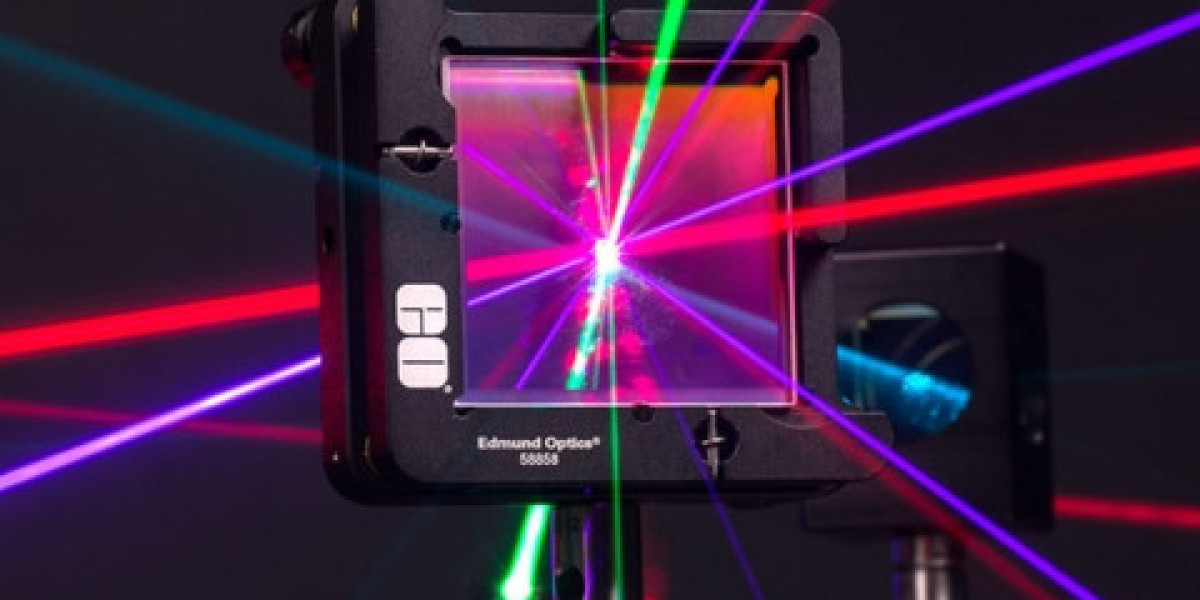In this guide, we will explore in detail why the laser mirror is such a critical component, how it functions, and why its role stretches far beyond simple reflection.
The True Role of a Laser Mirror in a Laser System
A laser mirror is not just a reflective surface; it is a highly engineered component designed to handle intense energy and direct it with absolute precision. In every laser cavity or optical path, the mirror determines whether the beam maintains its shape, stability, and intensity. The interaction of the beam with the laser mirror defines how much energy is lost, how much is reflected, and how well the laser maintains coherence.
Every fraction of a percentage in reflectivity makes a measurable difference in the overall output. That is why laser mirrors are manufactured with specialized coatings, substrates, and polishing processes to ensure minimal scattering and maximum energy control. The effectiveness of an entire industrial setup often depends on this single part.
How Laser Mirrors Influence Beam Quality
The quality of a laser beam is defined by its focus, stability, and uniformity. A laser mirror directly influences these parameters because the slightest imperfection on its surface or coating can distort the beam. The laser mirror maintains the wavefront integrity of the laser, ensuring the beam remains consistent from source to target.
This aspect is especially vital in precision-based industries. In laser cutting, for example, any disturbance in beam stability translates into rough edges or incomplete cuts. In medical lasers, the mirror’s performance affects safety and accuracy. Thus, the laser mirror determines whether the system delivers exact results or fails to meet required tolerances.
The Science Behind the Coating of a Laser Mirror
One of the defining features of a laser mirror is its coating. Unlike ordinary mirrors that reflect visible light, a laser mirror is optimized for a specific wavelength. This is achieved through dielectric coatings that are deposited in multiple layers, carefully tuned to match the wavelength of the laser being used.
These coatings are engineered to withstand high energy without degrading, ensuring consistent reflectivity even under extreme conditions. The design of a laser mirror coating ensures that it reflects targeted wavelengths with maximum efficiency while avoiding energy absorption that could lead to heating and damage.
By doing so, the coating transforms the mirror from a simple optical element into a precise energy manager that keeps the beam intact.
Why Substrate Material Matters in Laser Mirrors
The substrate of a laser mirror forms the foundation of its performance. Different materials such as fused silica, silicon, or copper are chosen depending on the application and wavelength. For high-power lasers, thermal resistance is crucial, and substrates are selected to withstand heat buildup without warping.
The choice of substrate also influences the weight, durability, and adaptability of the laser mirror in complex optical setups. For instance, lightweight substrates allow integration into moving parts, while robust materials ensure reliability in stationary high-power laser systems. In every scenario, the substrate defines how well the laser mirror maintains its reflective accuracy under demanding conditions.
Precision Engineering in Laser Mirror Manufacturing
Laser mirrors are not mass-produced like conventional optics. Their production involves precision polishing to achieve surfaces measured in nanometers of smoothness. Even the smallest deviation can scatter light and weaken the beam.
Manufacturers use advanced metrology tools to verify the flatness and uniformity of the mirror’s surface. This precision ensures that the mirror introduces no distortion to the beam path. The quality assurance process is rigorous because every laser mirror must meet exact specifications to function effectively in critical environments such as aerospace, defense, or industrial manufacturing.
Industrial Applications Dependent on Laser Mirrors
Laser mirrors find applications across a vast range of industries. In laser cutting and welding, they guide beams through complex optical paths with no compromise in power. In semiconductor manufacturing, they are used in lithography systems where precision is measured in nanometers. Medical lasers also rely on laser mirrors for procedures where safety and accuracy are essential.
In research environments, laser mirrors allow scientists to control and manipulate beams for experiments that require absolute precision. Each industry depends on the reliability of the mirror to ensure the laser functions as expected, proving that the mirror is not a background component but rather a defining one.
Maintenance and Performance Longevity of Laser Mirrors
While laser mirrors are built to withstand intense conditions, their lifespan depends heavily on maintenance. Contamination by dust, smoke, or debris can degrade reflectivity and cause heating, leading to damage. Proper cleaning techniques using non-abrasive methods extend the life of the laser mirror and maintain beam stability.
Regular inspection for surface damage or coating wear is also necessary. In high-power environments, even microscopic imperfections can reduce performance significantly. By ensuring proper care, industries can maximize the performance of their laser mirrors and avoid costly downtime.
Why Laser Mirrors Define System Efficiency
The efficiency of a laser system is directly linked to the quality of its optical path. Every reflection within the system contributes to either energy preservation or loss. Laser mirrors with high reflectivity ensure minimal energy loss, which translates into higher cutting speed, deeper penetration in welding, or sharper focus in engraving.
This efficiency is not just about energy savings; it affects productivity, output quality, and the lifespan of the entire system. A high-quality laser mirror essentially acts as the silent force multiplier of laser performance.
Laser Mirrors as a Long-Term Investment
For industries that rely on lasers daily, the choice of a laser mirror is a long-term investment. The right mirror ensures consistent results, reduces maintenance frequency, and protects the laser source from unnecessary strain. It is a safeguard for both performance and reliability.
Companies that prioritize the selection of premium laser mirrors often experience fewer interruptions, better output quality, and higher return on investment. This highlights the fact that the mirror is not just a replacement part but a core element in system design and planning.
Final Thoughts
A laser mirror may appear to be a small component in a complex laser system, but its role is decisive. From ensuring beam quality and stability to maintaining efficiency and protecting the source, the mirror stands at the heart of laser performance. Precision coatings, substrate choice, and engineering define how effectively it handles the demands of modern industries.
Every reflection inside a laser system tells the story of how well the mirror has been designed, manufactured, and maintained. For industries where precision, reliability, and efficiency are non-negotiable, the laser mirror remains the silent yet indispensable partner that determines the true potential of every laser system.



